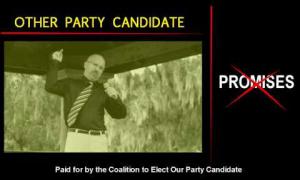How to get the most from your ghost
August 23, 2010
As a professional communicator, I’ve worked with some of the most powerful business and science leaders in the United States. Whether I’m writingspeeches, congressional testimony or books, my goal is to reflect the executive’s ideas, values and language patterns. The unique relationship between speechwriter and speechmaker works best when both observe three basic rules: Access, Collaboration and Trust.
Access: Jon Favreau, President Obama’s director of speechwriting, has it in abundance. Reportedly, Obama and Favreau meet in person daily. This close connection creates an atmosphere that allows the other two basics—collaboration and trust—to flourish.
In addition to frequent face time with the chief, successful speechwriters spend time in close proximity to the executives for whom they write. Trained observers, these writers watch executives’ interaction with people, hear their natural speech patterns and rhythms, and learn their word choices. The best writers incorporate these nuances into the material to enhance and reveal the genuine aspects of the chief’s personality.
I’ve traveled with C-level execs, participated in their senior leadership meetings, and facilitated their town halls. It doesn’t matter whether the ghostwriter is an employee or not; what contributes to the quality of the finished product is spending time with the leader.
Tip: Busy executives actually save time in the speechwriting process by scheduling regular meetings with their ghostwriters, inviting them to key meetings, and including them among their trusted advisors.
Collaboration: Bill Lane, speechwriter to Jack Welch, former chairman of General Electric, tells an anecdote about “noodling” with the legendary chief on the content of his annual letter to shareholders. Lane describes the tussle of ideas and phrases between Welch and himself as the two pounded out a first draft. Lane recalls that one line he wrote—his favorite—was nearly ditched by Welch because he thought it sounded overconfident. After some negotiation, Welch kept the phrase and it wound up as the business page headline in USA Today, driving up the stock price. Lane’s relationship with Welch was solidified.
Successful collaboration builds trust, our third basic. One of my clients, a learned scientist, left a successful career as an engineer to found and lead a not-for-profit organization dedicated to recruiting bone marrow donors. His ground-breaking work became the basis for the National Marrow Donor Program.
As his influence in the medical and business worlds expanded, he was invited to speak to audiences around the country. He resisted sharing the story of what drove him, because, although compelling, it was deeply personal. Years earlier, his son had leukemia. The boy’s only hope for survival was a bone marrow transplant and there were no matches in his family. My client launched an international search for a matching donor as his son clung to life. Against all odds, a match was found, the transplant was successful and the boy survived. My client dedicated his life to helping other families in the same crisis.
When I persuaded my client to share his remarkable journey, we collaborated on a speech that moved audiences to tears. Hundreds of people registered as bone marrow donors, improving the odds of survival for cancer patients worldwide. When he appeared on The Today Show and told his story to Katie Couric, thousands more registered.
Tip: Smart leaders know a speechwriter is not a stenographer. Choose a writer who is not afraid to express an opinion, defend a position and challenge the status quo.
Trust: Before I ghostwrote two books for a well-known information technology guru, we collaborated on a series of bylined articles for a trade publication. Learning to collaborate on a small scale created a foundation of success for bigger projects.
Building trust takes time. Rapport and confidence develop when the writer demonstrates an affinity for the themes and values the leader wants to express, and the executive appreciates the writer’s ability to capture phrasing that feels familiar and resonates with audiences. Over time, the writer becomes a member of the chief’s inner circle, creating the best atmosphere for successful collaboration.
Tip: Savvy executives trust a new writer with a modest assignment. When it is successful, they test the relationship with more challenging work. As the relationship grows, so do access, collaboration and trust.
ACT now to get the most from your ghost.
Jill Vitiello is president of the Vitiello Communications Group, an executive communications consultancy based in East Brunswick, N.J. She may be reached at [email protected]


